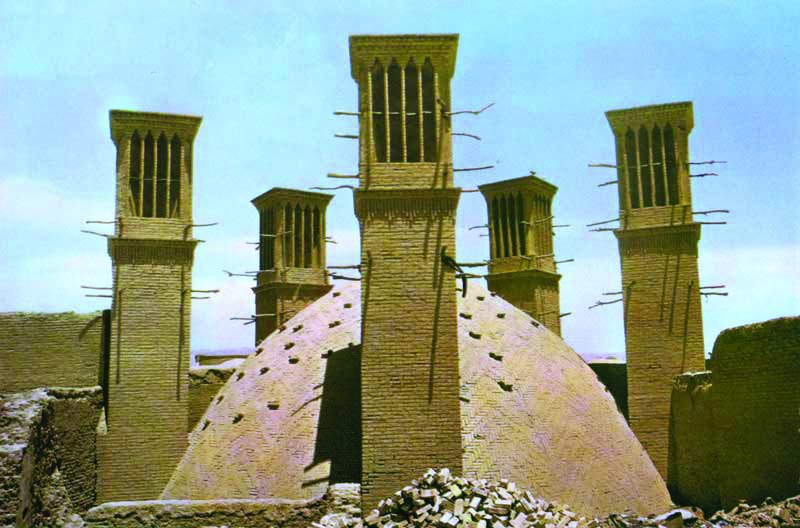Subterranean waterways offer clues to ancient way of life in Iran

Throughout the arid regions of Iran, mainly central parts of the country, agricultural and permanent settlements have been supported by the ancient qanat system of tapping alluvial aquifers at the heads of valleys and conducting the water along underground tunnels by gravity, often over many kilometers.
The qanats subterranean canal systems - also called Kariz in Persian - provide exceptional testimony to cultural traditions and civilizations in desert areas with an arid and scorching climate.
Snow fed streams were tapped at the foothills of surrounding mountains and channeled through sloping qanats, often over far distances to discharge into underground reservoirs or ab-anbars within the cities or in their neighborhoods.
Such constructions have a long history in Iran, there are still some remained from the 13th century onwards. Yazd is among the various ancient cities which have applied this concept to make urban settlements possible in central Iran.
Hydrological, climatic and social criteria overlapped to evolve a distinct architectural form for these water reservoirs that now forms a distinct part of architectural heritage and identity of Yazd and several other cities.
The hierarchy of urban space where ab-anbars were sited would determine both its size and the scale of constituent elements. Thus, minor neighborhood ab-anbars are usually endowed with fewer badgirs while larger, city center reservoirs are often serviced by six or more wind catchers.
The access openings to the street were often decorated with intricate stalactite ornament while larger ab-anbars often housed shops and coffeehouses in addition to public baths signifying an urban institutional status.
As it is often related to public use structures, one cannot trace the precise origin or patron of most ab-anbar reservoirs in Iran. Though the earliest urban water supply constructions in Yazd are believed to date from the Sassanid period and many others have been continually repaired and used, most extant ab-anbars can be today traced to the late Safavid and Qajar periods.
Ab-anbars and their associated wind towers play a pivotal role in enriching the Yazd skyline.
CAPTION: A file photo shows a brick water reservoir in Yazd. The subterranean cistern is equipped with six wind catchers on the top.
AFM/
Leave a Comment